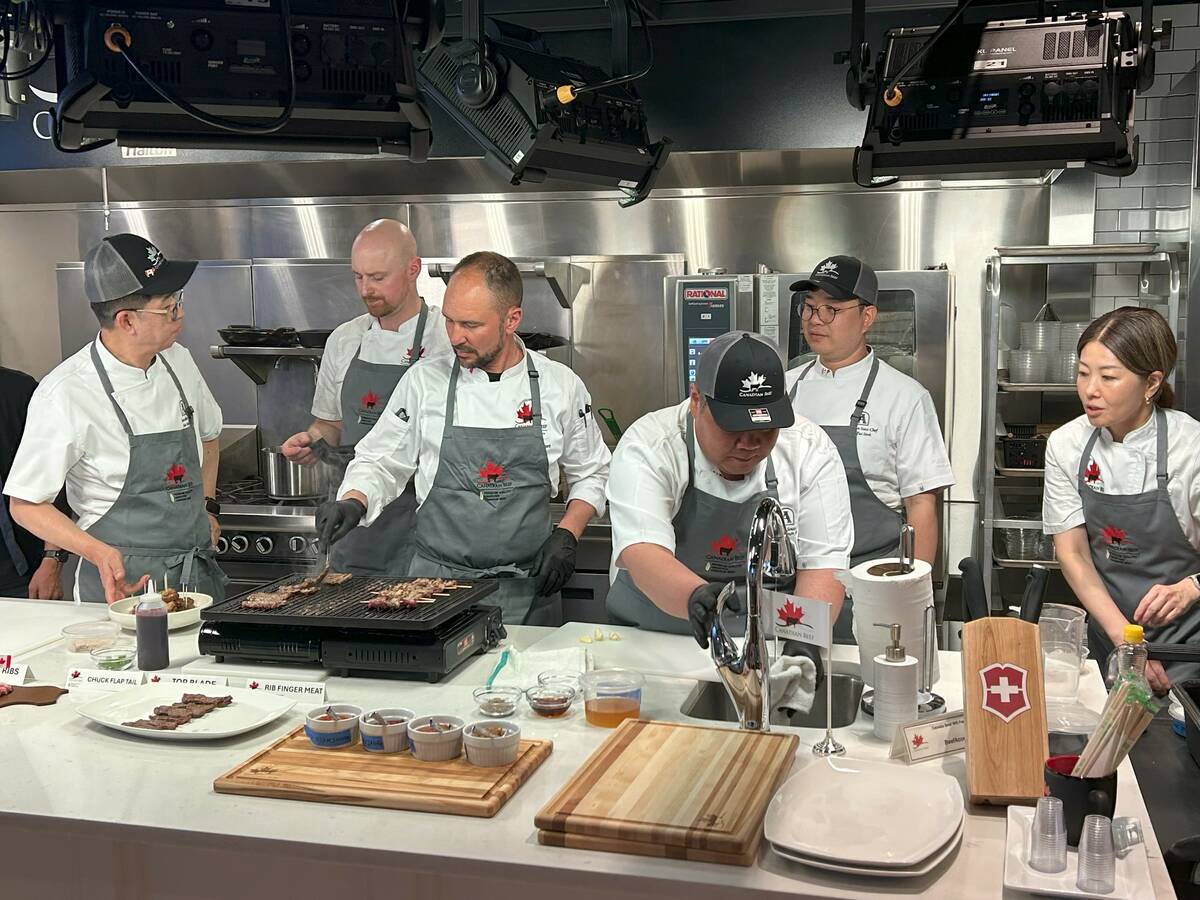The recycling of board members in leadership roles has long been an issue for Canadian agriculture. The common complaint from those on the board or in the position of power is that there is no desire on the part of others to serve. We have all heard the conversation: “the young people won’t step up,” “they have no interest” or “it is so hard to get folks to serve.” My response is that if there is not a vacated space — then how can someone else fill it? Perhaps it is time to #moveover.
Read Also

Promoting Canadian beef in Korea
Canada Beef reports on recent activities, including working with an influencer and an executive chef from Korea
What youth brings to the table is a multitude of gifts, ideas, attributes and disciplines that may have taken someone from my generation a lifetime to cultivate. Deeply connected, they can gather a team or tribe in a few hours and have the evidence to support their quest. They thirst for differentiation — that something that sets them apart — and are not afraid to search the globe via the Internet or in person for that special attribute for their farms.
- More ‘Straight from the hip’ with Brenda Schoepp: Do we need a French Revolution?
At the same time, they are one connected and often unified agricultural voice. They chat amongst themselves in the moment and come to conclusions in faster time than a meeting can be called.
Educated and creative, these new leaders have been exposed to as much information in a week as it took us months to gather and digest. With the world at their fingertips (literally speaking) they can check the market for beef on three continents, determine the cost to get it there, review and fill out the required paperwork, secure the order and track it while drinking a latte and holding a baby on their knee. In the meantime, a partner may be looking at a new robotic system for the barn, uploading a cattle health management APP and reviewing the latest closeouts on the last pen of cattle, while simultaneously charting the profit centres in the feedyard through a new set of software.
This is their world and they are not only focused and enthusiastic but they have the technical ability to spot issues in advance through systems analysis designed for them, perhaps even by them and with their agricultural needs in mind. They understand that this is a numbers game.
The level of transparency and accountability expected from business today is appreciated by these young potential leaders. As this is the new normal environment in which to operate, it does not feel invasive to them to put the ranch on YouTube or tweet about the first calf. This is all part of exposing the public, which is now lapsing into two generations away from agriculture, to the industry that feeds them.
Communication is to youth what breathing was to the generations before. With every breath they are willing and able to transact, discover or encourage each other through a multitude of communication models. They can challenge old systems and offer suggestions that are well researched. And consider this: they are the ones interviewing the board, not the other way around. So if there is not a lineup or matrix of interested applicants for your board or executive teams who are young, smart and connected, it may be time to have a board or executive team assessment to examine purpose, vision, mission and values.
To be fair, I fall into the exiting generation and we did the best we could with the information and tools that we had. But the roles do shift after time and it is much more rewarding to mentor and encourage a younger person to take my place than to think for a moment that I am as connected as the young folks whom I work with. It might feel threatening but there comes a time that even the best board members who understand governance, transparency and accountability must #moveover and make room for change.
Mobility and social connection allows for the families with a multitude of tasks and children to participate. And as children develop they are seen more at what was once an exclusive adult event, connected in their own world to others around them. The division that used to exist in which the learned were on one side of the fence and the rest were on the other does not fit well in the authentic model of empowerment and co-operation. Agriculture is a family affair and today’s youth is inclusive in this regard.
Willing to work in teams, I have watched the unification of youth from all over the world as they share problems, issues or work towards solutions that can be applied in the most obscure circumstance. It is this attribute of teamwork that makes youth so attractive to business because it is no longer the “who’s who” at the wheel but a collective voice that is simply structured enough through simple governance to change the direction of an industry. Striving for excellence, farm families, groups and communities can ensure gender equality, child safety and advanced learning for all when standing together.
Perhaps the strongest force on earth today is unified youth leadership that has a clearly communicated purpose, vision, mission and values. They not only are the greatest voting power and the ignition for our future but the keepers of our past. The future of food, the people who produce it, the infrastructure that delivers it and the currency that pays for it is becoming increasingly complex. We need to invite these bright new minds to the table. For them to be there, we have one last task and that is simply to #moveover.
















